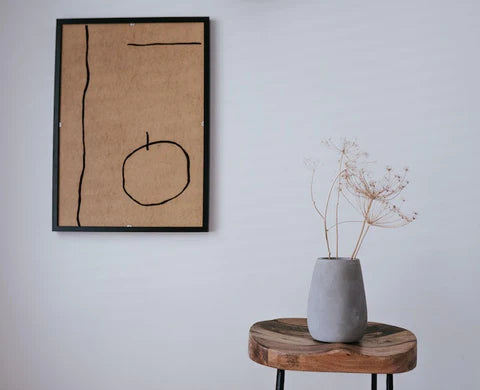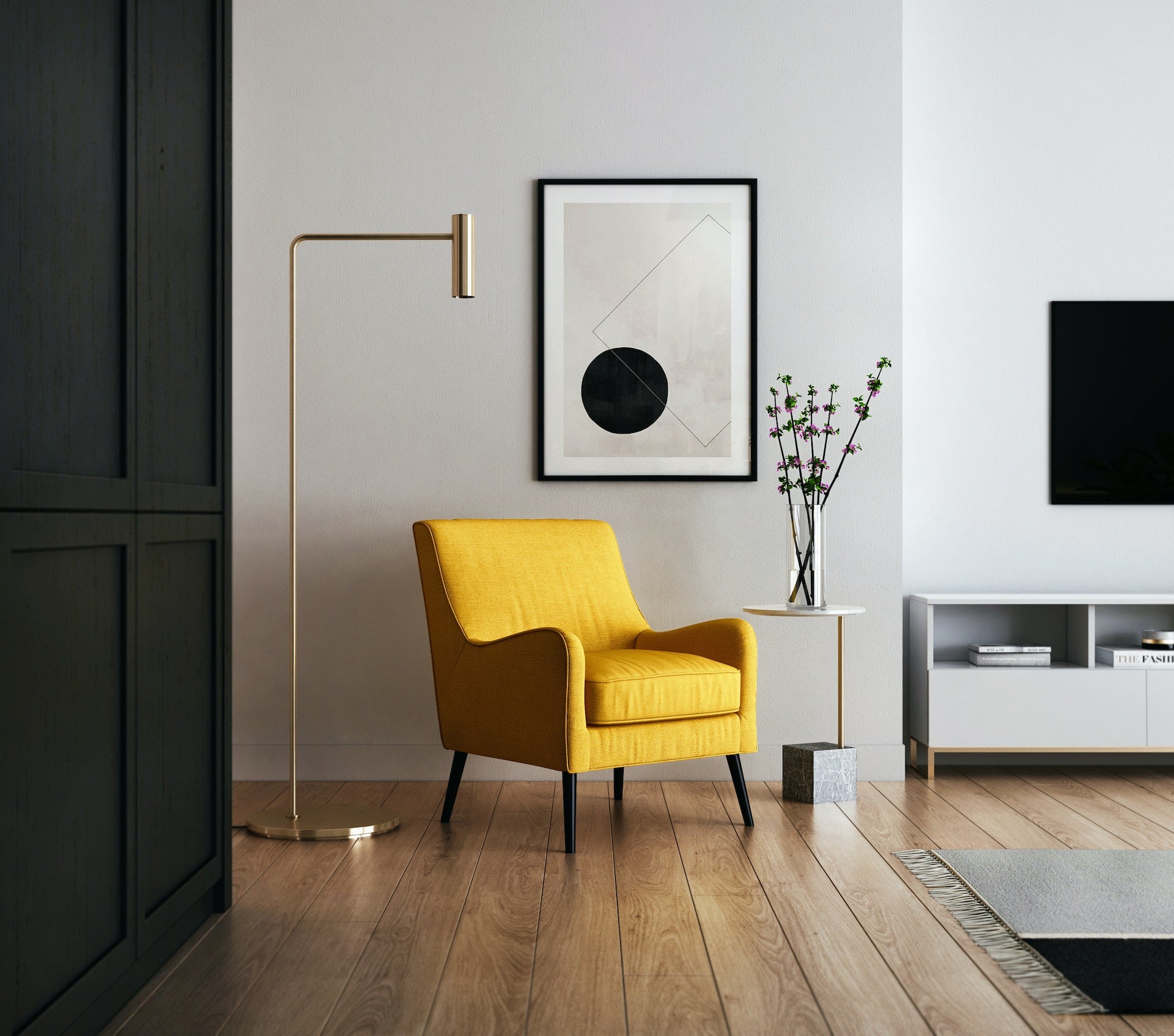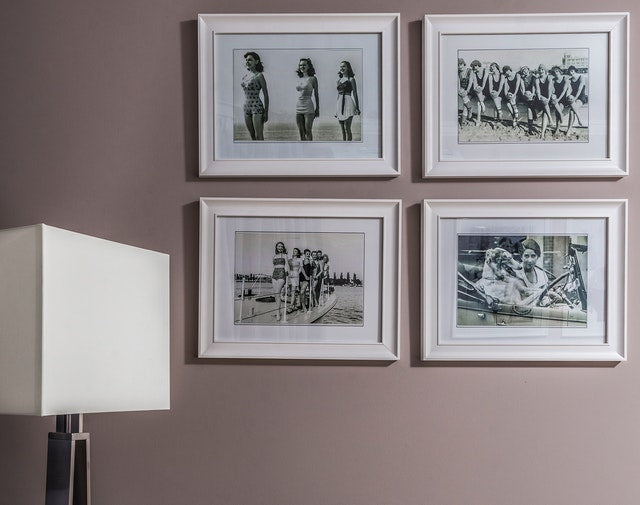

The list of ways you can design and decorate your home office is inexhaustive, from minimalism to maximalism, modern to traditional, rustic to industrial, and all the different layouts you can choose from. But suppose you crave that uncomplicated look and feel, adore those gorgeous grounding neutrals, and plan on decking your office with sustainable, nature-friendly materials and finishes. In that case, it sounds like creating a Japandi-inspired home office might be right up your alley.
If you’re not familiar with this design type, Japandi (or Scandi-Japanese) is an emerging trend that combines timeless Japanese elegance with Scandinavian minimalism and practicality – two different styles with mutual respect for nature and artisanship. Japandi is a quite forgiving style, too, one that allows homeowners plenty of flexibility and room for mistakes. A new take on minimalism, but with the warmth of the colors and textures that makes the space as cozy as it can get.
Here is how you can design a Japandi-inspired home office.
#1 Choose natural and earth-aware materials
Natural, renewable materials such as rattan, Kubu, wood, bamboo, jute, and sisal are a must-have when creating a Japandi-inspired home office. These will help you achieve a calming and welcoming space that feels like reconnecting with the surrounding environment.

Whatever you decide to bring into your Japandi-inspired office should be high-quality and sustainable.
Alt-tag: Wall art next to a table.
Take rattan, for instance, one of the headlining choices for the Japandi looks. Hand-crafted rattan chairs, cabinet doors, and tabletops bring that timeless charm into your office and a lot of texture, a favored feature in Scandi schemes. Expert interior designers love complementing rattan with light brown furniture pieces and charcoal black home décor, so you can take a cue from them. The idea is to choose sustainable earth-aware pieces that are hand-crafted to share both Scandinavian and Japanese love for artisanship and craftsmanship.
#2 Use clean lines
The Japandi-inspired interior design speaks simplicity through the stunningly clean lines of its furniture and accessories. However, don’t confuse this with the simplicity of the modern minimalistic manifesto. Japandi is more human-centric, using natural materials, smooth and simple shapes, and comfortable and functional furniture. Therefore, you could easily mix some angled silhouettes with rounded ones. The point? When you enter the room, your eye should glide around the space almost effortlessly.
#3 Adopt the minimalist mindset
For a Japandi-inspired home office, the two-style blend follows minimalist design principles. For this reason, creating a Japandi-style office means, As Franco Bertoni would put it, “taking everything to its essential quality and achieving simplicity.”
You begin with function: each piece should serve a purpose and respond to your needs clearly. Ditch the unnecessary paraphernalia and keep only items you need and love to keep things clean and tidy. This implies everything in your office, from the furniture and other things on display to the tiniest bits and bobs you may be used to shoving into drawers and cupboards. This helps to encapsulate serenity and an inner peace mindset while, at the same time, reminding us that we can be happier and more appreciative of the things that we already have in our office space.
Whatever you decide you don’t need, you can safely put away in a portable storage unit. These come in pretty handy when you need some extra space, especially during the renovation process. There are, however, some dos and don’ts of renting a portable storage unit. There’s a right way to use the unit. For instance, if you’re ditching your old pieces of furniture, you might want to disassemble them first. This way, you could store more things in one unit.
#4 Pick a neutral color palette
The color palette plays an important role in the Japandi style. Both styles are deeply influenced by nature, emphasizing the ease and natural flow of colors inspired by the great outdoors. For this reason, there are no dominating or harsh colors. Rather, the neutral-based and natural color scheme is a fantastic way to talk the Japandi talk. Think deeper buff browns, shades of beige, taupe, sand, cream, and stone. These are absolute favorites in Japandi-styled spaces that sing to the restfulness of the scheme.

Alt-tag: An empty white room with a stool and a ladder.
Of course, there’s no reason not to play with contrasting accent colors too. After all, Japandi’s all about mixing things up. Choose typical Scandi colors, such as hints of pale blues, greens, or pinks. Or create some interest with darker greys or black for a sophisticated contrast. Japandi philosophy is to identify just the right balance that creates one harmonious, happy whole.
#5 Go bespoke
As we’ve said: quality over quantity. This has partly to do with the trend’s earth-aware principles and partly with its appreciation for artisans and the uniqueness their creations entail. Quality artisanship is a big one to tick off before you decide to invite any furniture piece to move into your office space. What is more, top-notch making applies to virtually anything you include in your Japandi-style room – lighting, décor, et cetera.
This means you might need to fork out a little extra initially. However, having something high-quality and unique in your space, built with the long game in mind, is a worthy investment that you will treasure all the more.
#6 Accessorize with care
Japandi may be associated with minimalism and simplicity, but this does not mean that it lacks the beauty of décor. The philosophy actually calls for accessories, but you must approach this with the utmost care. You need pieces that will cozy up the space without overwhelming it. Pieces that prioritize functionality over decoration. No excessive embellishment and frills. It’s the kind of style that inspires you to think long and hard about the way you’re going to use the room. And, in return, the room will behave as stunningly as it looks, responding to its decorator’s every whim with empathetic ease.

Alt-tag: Two people layering rugs.
Consider statement art pieces, houseplants or dry flowers, vases made of natural quality materials, layer carpets and rugs, bring in bamboo accessories, etc. If you want to create a Zen space, these are your go-tos.
#7 Balance your lighting
The “Jap” in Japandi emphasizes the importance of function. That would be the lamp in your reading corner, the spotlight over your work surface, your desk lamp, and other task-style lighting areas. LEDs have come into favor as an energy-efficient lighting option, but, if possible, make the most of your natural lighting. Instead of eye strain, headaches, or blurred vision, you get a properly lighted room that regulates hormones, keeps your circadian rhythm in check, and boosts your productivity. The second “andi” part, on the other hand, is meant to bring out that Scandi softness that delivers ambiance and nurturing atmosphere. Mix the two, and you’ll have all your bases covered.
Celebrate imperfections
One final bonus tip for creating a Japandi-inspired home office is all about loving and celebrating imperfections. This philosophy comes from a Japanese approach to design: aesthetics known as wabi-sabi (侘寂). This essential concept celebrates all things flawed or incomplete, appreciating the beauty of everything that isn’t conventionally perfect. It’s about accepting the imperfection of life itself as it is. Natural materials age and patinate, but the years only add warmth, charm, and personality in this case. Similarly, an old shattered vase that was glued back together, distressed vintage rugs, faded and worn textiles, and kinds will offer the perfect finishing touch to your Japandi office and nestle into the space as if they’ve always been there.
Photo Credits:
https://www.pexels.com/photo/mockup-picture-frame-on-wall-above-desk-8490187/
https://www.pexels.com/photo/japandi-style-home-decor-with-a-gray-vase-and-beige-picture-8251592/
Leave a comment (all fields required)
Comments will be approved before showing up.


